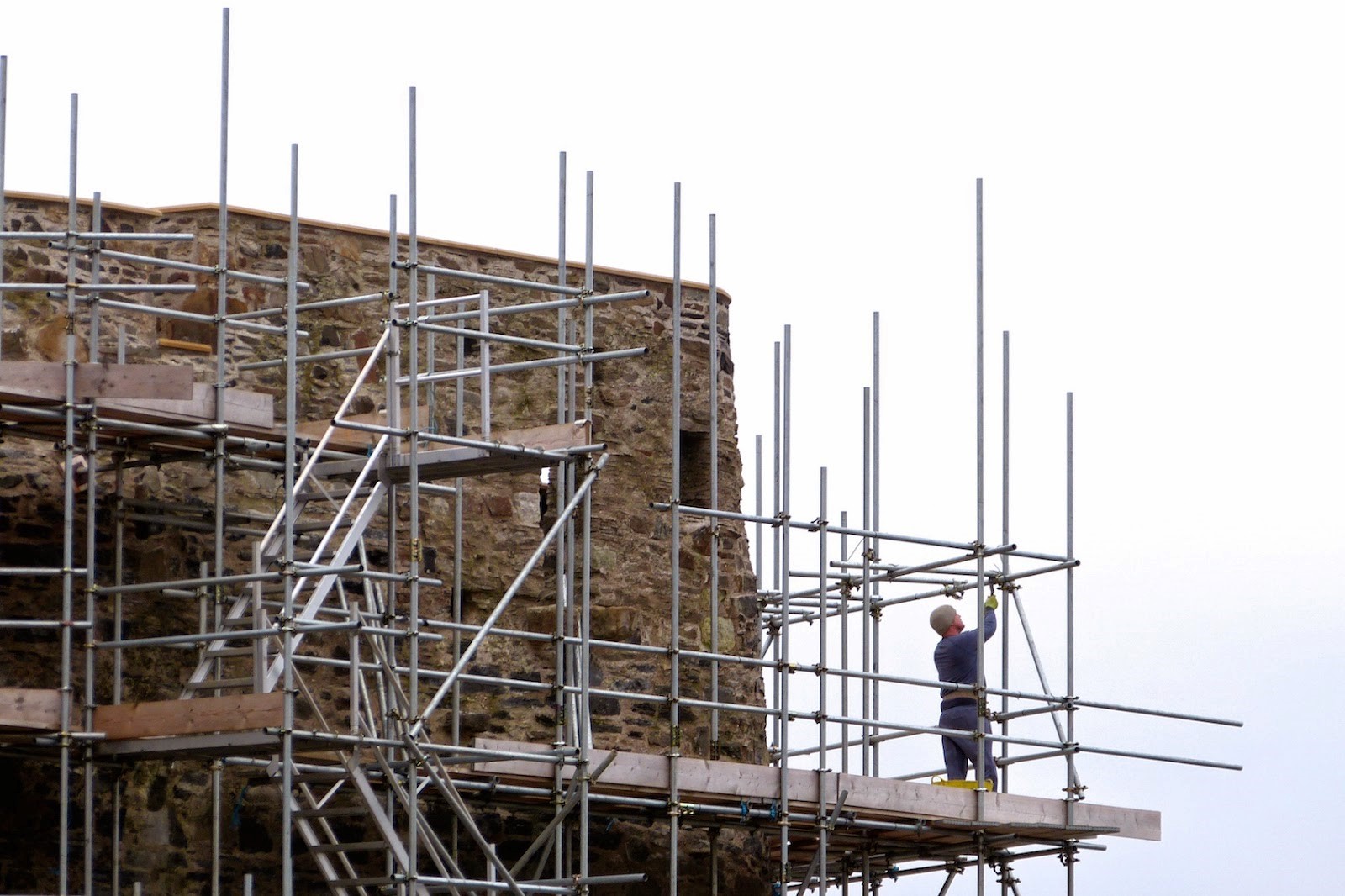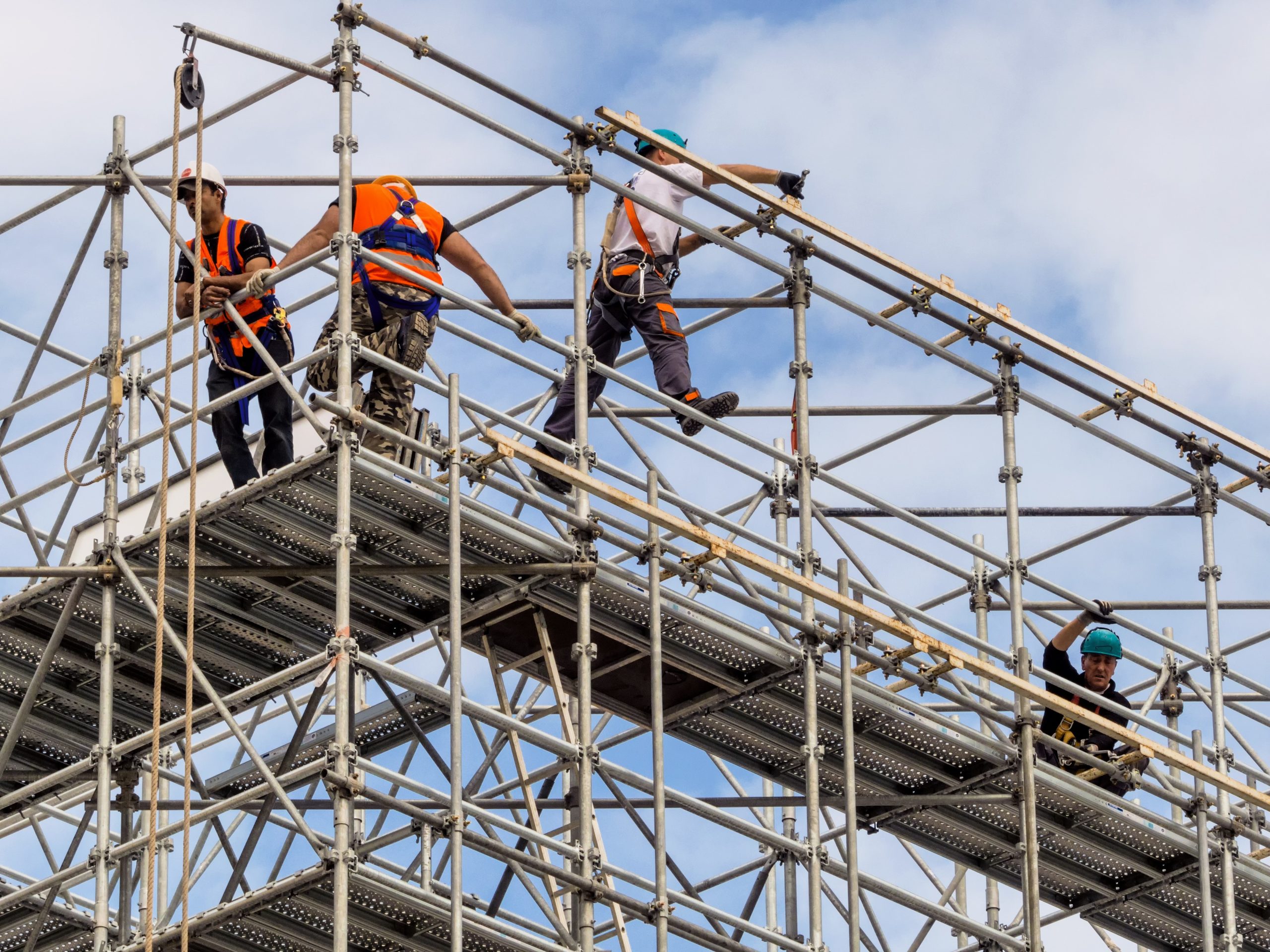Falling is one of the main causes of death at the construction site and accounts for more than 40% of all construction deaths each year. A high percentage of these deaths are associated with scaffolding falls and accidents.
Important things to do
It’s important that everyone who will be working on scaffolding is trained by a qualified person. This training should include instruction on identifying electrical hazards, the potential risk of falls and danger from falling objects and how to deal with these dangers when they occur. It is also important that workers are trained on the proper use of scaffolding, load capacity and how to move material on the scaffold.

Before anyone gets on the scaffold, it is important to ensure that the scaffolding has been checked by a qualified person to determine that it is well-founded and that the appropriate scaffolding for the field site is being used. If at any point you feel that the scaffold is not safe to use, check with your supervisor or security experts to be on the safe side.
Whenever there are people who are working under, on or around the scaffold, a site supervisor must ensure that the individual is wearing a hard hat and all other necessary protective equipment.
Make sure that anyone working on a scaffold is licensed to do so. An unlicensed worker won’t usually have the necessary insurance to work on construction sites and will only end up putting the company at risk of legal action in the event of an injury or death at the site.
It is essential to make sure that each scaffold of over 10 feet is equipped with handrails facing away from the property and on each of the three sides. While fencing is an important part of any scaffolding, it cannot replace the importance of safety gear or protective wear. Even when a fence is installed, the supervisor must ensure that everyone working on, under or around the scaffolding is well protected at all times. For Essex Scaffolding, visit a site like Essex Scaffolding company BG Scaffolding
Things not to do
Don’t ever be tempted to leave items on the scaffolding when the workday is over. Should there be tools and equipment that will be used later, remove them and put them away, bringing them back only when you have a need for them rather than leave them lying about on the platform. Any items lying around on the platform can get knocked, causing them to plunge to earth, possibly causing death. These items also present a danger if it’s windy as the movement can cause them to fall from scaffolding, maybe injuring the person under or around the scaffold.

No matter how much you are behind schedule, it is never a good idea to overload the scaffold load limits. Most scaffolding has a high load and this information is stamped or printed on the side with the maximum number of people to be on the platform at one time and the load carrying capacity. Although scaffolding is usually capable of supporting more than double the load capacity stated, there must be limits to avoid burdening the scaffold and putting the safety of workers at risk.
During poor weather, the scaffold can become very slippery and should be avoided. Conditions like rain, ice, hail, snow, mud and even debris remaining after rain should be cleared from the platform before anyone is allowed to ascend. It is also not a good idea to use scaffolding in strong winds.



